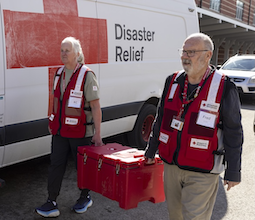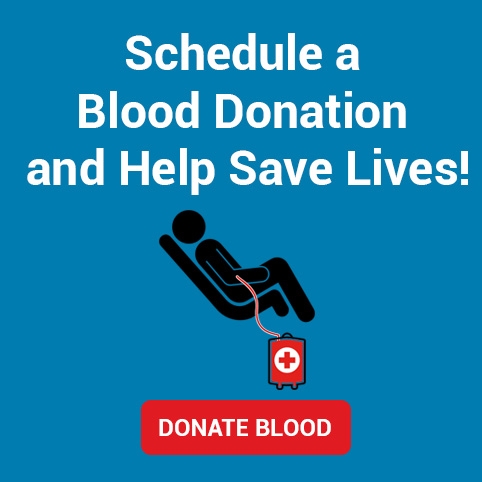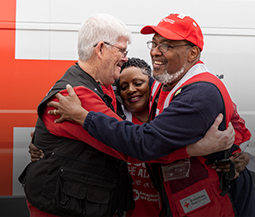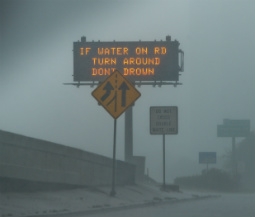Extreme heat is too dangerous to be invisible. Learn more at redcross.org/HeatCheck.
Dangerous high temperatures continue to bake parts of the U.S. with more than 15 million people living in areas where extreme heat threatens this week. The hot weather will move west to east across the country, affecting people in as many as 30 major U.S. cities.
The combination of these record high temperatures, extremely dry foliage and windy conditions will elevate the risk of wildfires in the Southwest and Great Basin, especially in Utah where a very high fire danger exists. Find out more here.
Meanwhile, a dangerous heatwave is also moving across Europe and Red Cross and Red Crescent Societies are mobilizing to help, opening cooling centers, distributing water and educating people on the dangers extreme heat brings with it. Learn more here.
Such extreme heat can be dangerous ─ even deadly. Extreme heat is a leading cause of weather-related deaths in the U.S., and a 2024 study found that heat-related deaths are on the rise. According to the U.S. Environmental Protection Agency, more than 14,000 Americans have died from causes directly related to heat since 1979.
WHAT YOU SHOULD DO The American Red Cross urges everyone to take care of themselves, their loved ones and neighbors by following these three critical steps:
- Stay hydrated. Drink a cup of water every 20 minutes, even if you don’t feel thirsty. Avoid sugary, caffeinated and alcoholic drinks. Check your urine color — dark yellow means to drink more water.
- Stay cool. Spend time in air-conditioned places. If your home is too hot, go to a mall, library or cooling center. Considering sitting in the shade outside, as it may be cooler than a home without air conditioning, and that they take cool showers or baths to help cool off.
- Stay connected. Check in twice a day on those who are older, have health problems or live alone by texting, calling or knocking on their door. Encourage outdoor workers and athletes to use the buddy system and check in on each other often. Never leave a child or pet alone inside a parked car, and make sure pets have access to fresh water and shade.
HEAT ILLNESS It’s critical to act fast if someone has become ill because of the heat.
Heat cramps are signaled by heavy sweating and muscle pain. Have the person stop what they’re doing, rest in a cool place and drink a cup of water — or a sports drink — every 20 minutes. If they feel sick, pause drinking. Get medical help if cramps last more than two hours or if they have heart problems.
Heat exhaustion is signaled by heavy sweating, weakness, cool and clammy skin, muscle cramps, dizziness, fainting, nausea or vomiting. Have the person stop what they’re doing, rest in a cool place and drink a cup of water — or a sports drink — every 20 minutes. Loosen their clothes and place cool wet cloth on their body. Get medical help if they vomiting, don’t feel better in an hour, or if you have heart or kidney problems.
Heat stroke is a deadly condition signaled by high body temperature, rapid heartbeat, confusion, headache, dizziness, fainting, nausea or vomiting. Call 911. Move the person to a cool place, remove extra clothing and use a wet cloth or a cool bath to cool down. If possible, have them sip a sports drink or water.
IF THE POWER GOES OUT When a heat wave and a power outage happen at the same time, it can be even more dangerous. Stay in air conditioning either at home or at a mall, library or cooling center. If you need to keep medicine cold or use medical devices that need power, talk to your doctor about a backup plan. Keep an ice-filled cooler stocked with food, water and medicine so that they don’t spoil. More information is available here.
Finally, download the free Red Cross First Aid app so you’ll know what to do if emergency help is delayed and the free Emergency app for real-time weather alerts and heat safety information. Content is available in English and Spanish with an easy-to-find language selector. Find both apps in smartphone app stores by searching for the American Red Cross or going to redcross.org/apps.
















